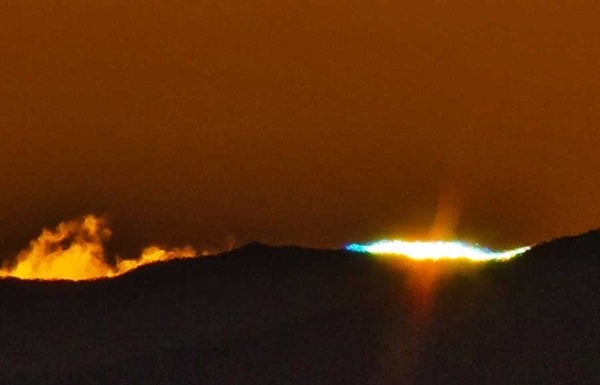Seeing the blue color, however, requires extremely clear and transparent sky conditions. The reason is that the light path of the last ray of sunlight to your eye passes through the densest part of the atmosphere where air molecules, water vapor, and atmospheric contaminants effectively scatter blue and violet light away from your eyes more than any other color; this is why green flashes are more common than blue ones. Blue flashes are more visible at higher elevations, where the atmosphere is thinner and contaminants fewer.
The “flash” terminology is misleading, so you might expect to see an intense flaring of blue light. Generally, however, the opposite is true, and the last bit of sunlight gets progressively smaller. Only on rare occasions, under specific atmospheric conditions, does a true flash appear. The best blue flashes occur under mirage conditions, which can magnify refraction and enhance the view for a couple of seconds before the phenomenon vanishes.
Of course, you must be very careful when looking for the blue flash, keeping your direct gaze away from the Sun until only the last segment of the upper rim is visible. Staring directly at the Sun’s entire disk, even when it lies low in the sky, may cause eye damage.
Contributing Editor










